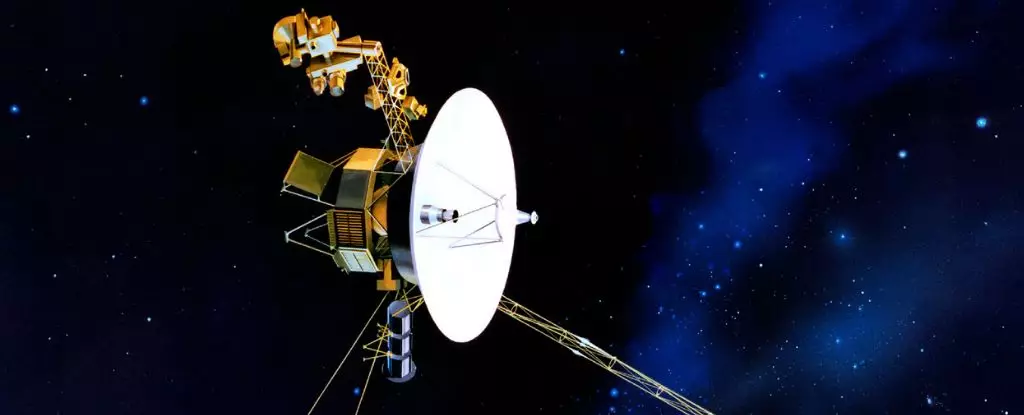Launched in the late 1970s, the Voyager spacecraft have spent decades traversing the vast stretches of our solar system and beyond. As pioneers of interstellar exploration, Voyager 1 and Voyager 2 are unmatched in their contributions to our understanding of the cosmos. However, as these mechanisms age and their power levels decrease, NASA faces critical decisions about the operational capacity of these storied probes. Recent developments have led to the shutdown of Voyager 2’s plasma science instrument, raising vital questions regarding the future of data collection from these groundbreaking missions.
Both Voyager probes are powered by radioisotope thermoelectric generators (RTGs) that utilize decaying plutonium to convert heat into electricity. Initially, at launch, they provided a significant power output, but over time, their efficiency has waned. Currently, Voyager 2 operates with only a fraction of its original power, compelling mission engineers to make tough choices about which instruments to keep operational. After years of careful management aimed at prolonging scientific output, NASA has decided to deactivate the plasma science instrument to conserve power for more critical experiments. The instrument has historically measured ionized particles and analyzed plasma flow, but its utility diminished significantly as Voyager 2 ventured further into interstellar space.
The two Voyager spacecraft stand as substantial milestones in human exploration, not only for their groundbreaking flybys of Jupiter, Saturn, Uranus, and Neptune but also for their ongoing contributions to our comprehension of the heliosphere and interstellar medium. They are the only man-made objects to have ventured into interstellar space, making their scientific data invaluable. Each probe carries a suite of instruments designed for discovery, including magnetometers and cosmic ray systems that monitor the interplanetary magnetic field and cosmic rays, respectively.
Despite the impending power constraints, the importance of the remaining instruments cannot be overstated. They will continue to collect unique measurements that help us understand not only our solar system but also the broader universe. The unique geographic configuration of the outer planets allowed these missions to maximize their scientific return, paving the way for understanding planetary atmospheres, magnetic fields, and radiation environments.
As Voyager 2 continues its journey through interstellar space, it is essential to note the significance of the heliopause, the boundary where solar wind from the Sun meets the interstellar medium. The probes’ findings about this crossover are crucial, especially the drop-off in plasma flow when Voyager 2 exited the heliosphere in November 2018. This shift signifies profound interactions between solar particles and the interstellar environment, revealing insights into cosmic physics that scientists are still unraveling.
In observing the interstellar medium, Voyager 2 has opened a new chapter of inquiry, significantly contributing to our understanding of structure and dynamics in cosmic realms far beyond Earth. However, the limited capacity for power and data collection places constraints on what can be achieved moving forward.
The launch of the Voyager spacecraft marked a revolutionary era in space exploration, providing humanity with a vibrant collection of visual and scientific data regarding the outer planets. From astonishing images of Jupiter’s Great Red Spot to the discovery of intricate ring systems around Saturn, both missions have fundamentally changed our perspective on the solar system. Even now, as they travel over 20 billion kilometers from home, their historical significance compounds with every data packet sent back to Earth.
Looking ahead, both Voyager spacecraft remain operational, but the clock is ticking. NASA’s fleet must navigate difficult decisions, balancing power conservation with the need for continued data collection. Mission crew continues to optimize operations and may still find innovative methods to prolong the instruments’ functionality. As the probes continue to communicate with Earth—despite the lengthy wait time of nearly two days for signals—the scientific community holds its breath in anticipation of what insights remain to be unwrapped before the inevitable conclusion of these iconic journeys.
As the Voyager probes enter their twilight years, the legacy of exploration and discovery they embody will undoubtedly resonate for generations to come. While the decision to deactivate crucial scientific instruments may seem grim, it also highlights the remarkable achievements of these missions. Their impact on our understanding of the universe remains profound, ensuring that the spirit of exploration continues, even as power wanes. The quest for knowledge, aimed at deciphering the mysteries of space, has never been more critical and will remain an enduring endeavor for humanity long after the lights on Voyager finally fade.


Leave a Reply